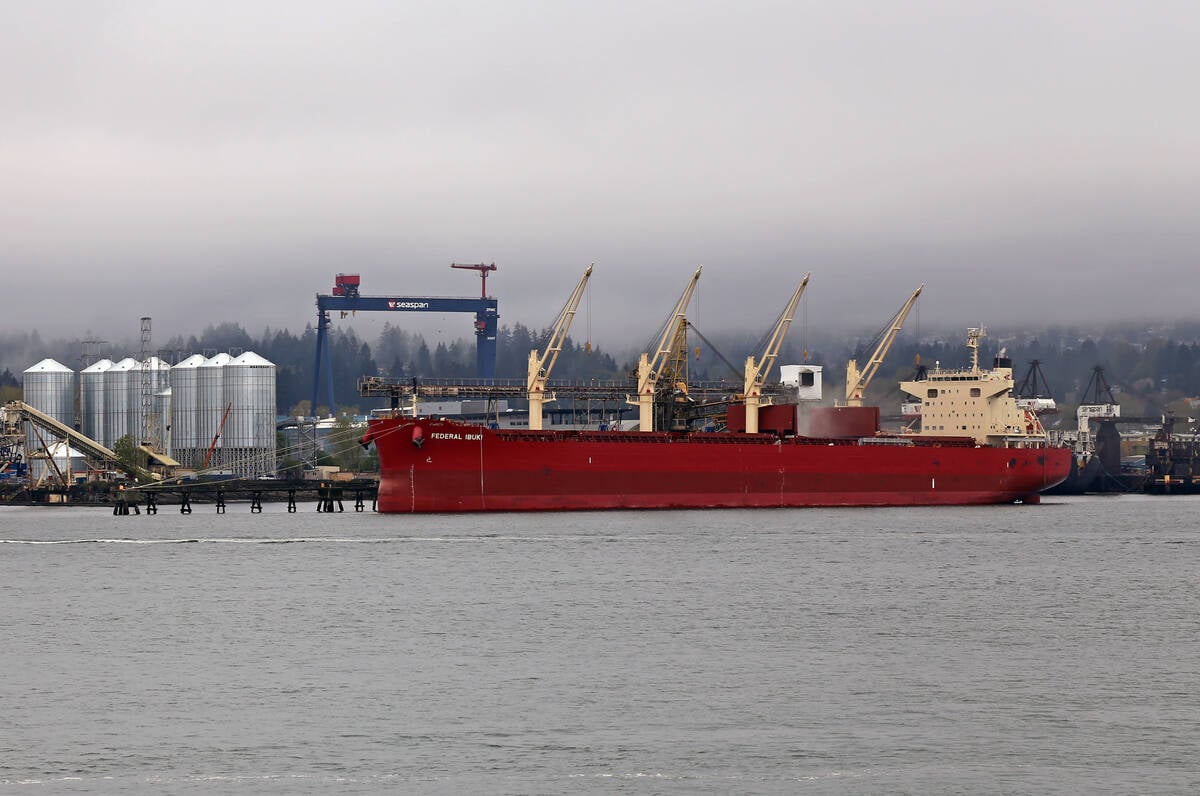WINNIPEG (CNS) — It’s a nervous time for Canada’s canola industry as it lobbies the Chinese government over a plan to impose new dockage rules on imports of Canadian canola on Sept. 1.
That’s when China’s quarantine agency, AQSIQ, says the dockage allowances for Canadian canola will be pegged at one percent, down from the old mark of 2.5 percent.
China has said worries over blackleg disease are the reason for the new rules.
However, the president of the Canola Council of Canada said she doesn’t buy that.
Read Also

Vancouver port says it has improved efficiency
Grain movement has been strong at the Port of Vancouver due in part to a new centralized scheduling system.
“There’s absolutely no reason from a disease perspective to reduce dockage, that really should be a commercial negotiation,” said Patti Miller.
“Blackleg won’t be transmitted through dockage.”
Many in Canada believe the decision is prompted by China’s desire to limit the flow of oilseed imports while it gets rid of existing rapeseed stockpiles.
Whatever the case, the unresolved issue has the attention of the market, according to a trader in Winnipeg.
“It’s certainly a big negative and might be adding to some of the selling in here too because people are saying, ‘it’s still not done, it’s still not done,’ which is giving speculators some confidence that this thing (canola market) is still going down,” noted Keith Ferley of RBC Dominion Securities.
Another analyst, Mike Jubinville of ProFarmer Canada in Winnipeg, suspects China may decide to delay the deadline.
“I suspect there will be hype about it in the next six weeks and then all of a sudden it will go away.”
Jubinville added that the Chinese need the canola just as badly as Canada needs them to buy it, which is why he’s confident something will be done.
“Every year they need just as much, usually more, than the year before,” he said, adding canola was relatively cheap compared to other vegetable oils.
November canola was trading below $450 per tonne the morning of July 26. The last time it was that low was in March.
Statistics Canada estimated this year’s canola area at 20.02 million acres, which is roughly the same as last year’s acreage.
While excess rain was causing a few problems for canola on the Canadian Prairies, there were still expectations of a very large harvest.
Miller stresses she hopes a solution will be found but wants people to know how big a deal it would be if the new dockage requirements are put in place.
“If we don’t find a solution by Sept. 1, there’s going to be significant consequences,” she said.
Miller said the issue touches everyone in the supply chain, from the producer through to the grain-handling business.
A critical question raised by the looming deadline is whether grain handling companies have the ability to get dockage down to one percent.
“Each company will make their own decision, of course, but the industry at large does not believe one percent can be achieved,” Miller said.
Whether canola dockage is a real problem or not doesn’t matter, she said, because China ultimately decides what it will allow with its imports.
“Neither China or Canada want canola trade to stop. Everyone is committed to working through this,” she said.
Jubinville said an agreement could come at the 11th hour but nothing is certain.
“I could be wrong and the Chinese dig in their heels on this issue and it stops the flow and that would be very bad, but I suspect they really need it and will start buying.”
The Chinese Embassy in Ottawa said experts from its agricultural department were talking with their Canadian counterparts about how to solve the issue.
Canada exported four million tonnes of canola to China in 2014-15, accounting for nearly half of the 8.9 million tonnes of total exports, according to Canadian Grain Commission data.
China has accounted for 3.2 million tonnes of the 8.5 million tonnes of canola exported during the 10 months to date of the current crop year.
















